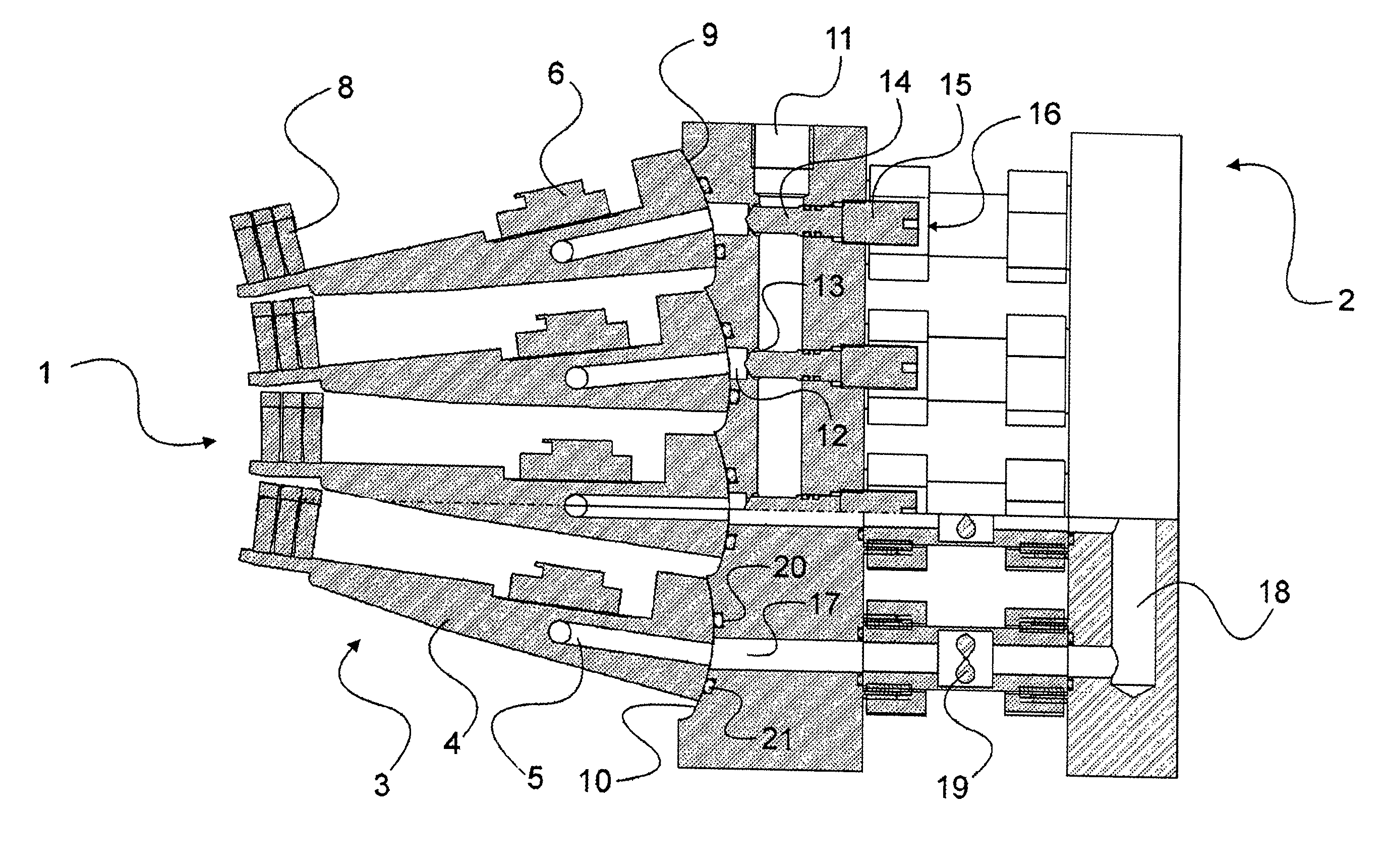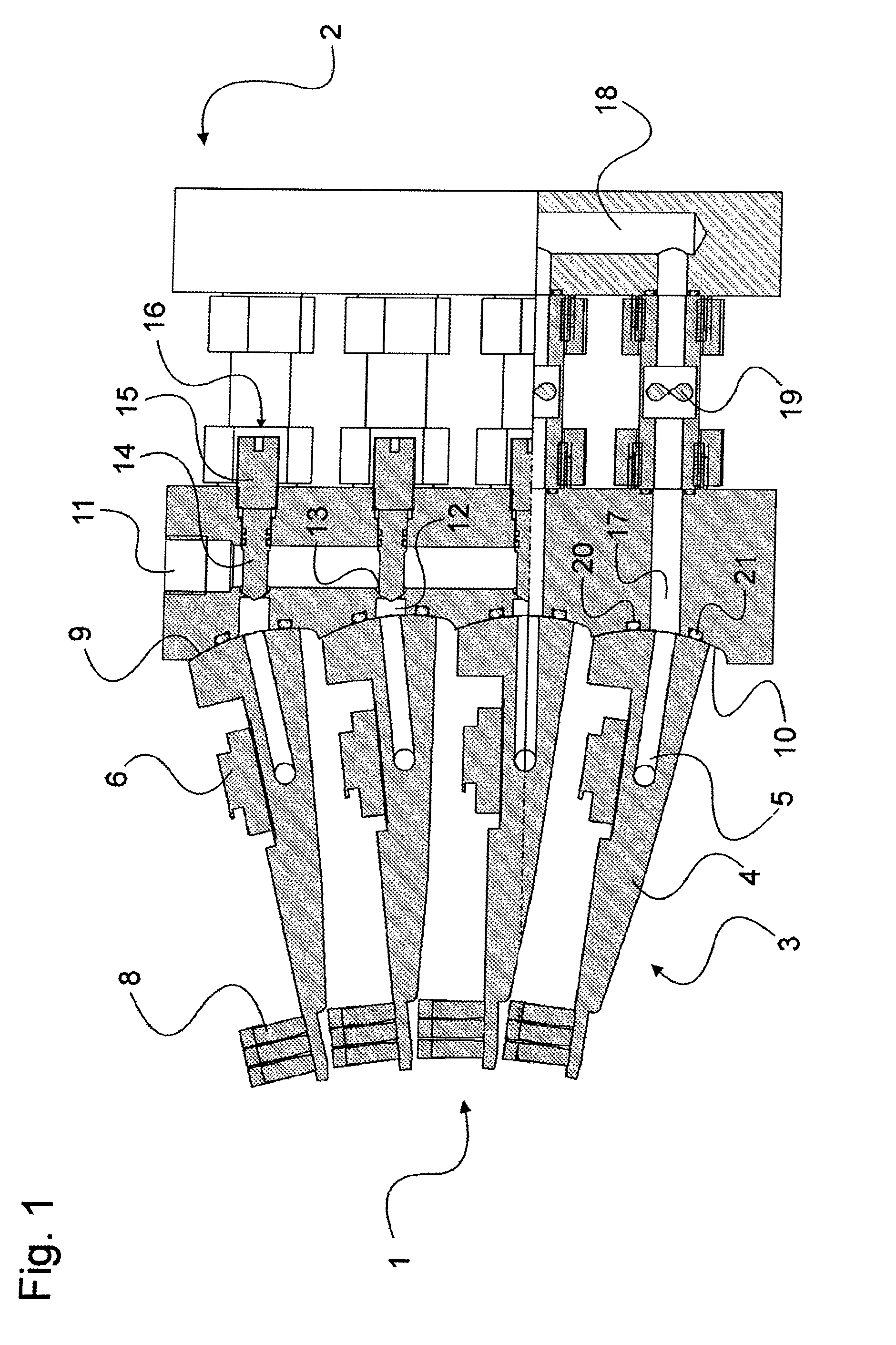Polymerization device
a technology of polymerization device and plastic, which is applied in the direction of x-ray tube, light therapy, optical radiation measurement, etc., can solve problems such as compact design
- Summary
- Abstract
- Description
- Claims
- Application Information
AI Technical Summary
Benefits of technology
Problems solved by technology
Method used
Image
Examples
Embodiment Construction
[0017]The preferred embodiment of the present invention will now be described with reference to FIG. 1 of the drawing.
[0018]FIG. 1 shows a laser module 1, a single mounting unit 2, and four laser units 3 mounted on it. Each laser unit 3 includes a base unit 4 within which coolant channels 5 extend, a laser-diode bar 6 mounted on the base unit 4, and a collecting lens 8. The base unit 4 includes a curved adjustment surface 9 on the side opposite the collecting lens 8 that lies flat on an identically-curved mounting surface 10. The mounting surface 10 is a component of the mounting unit 2. Each laser unit 3 is mounted in the vicinity of the collecting lens 8 so that it may pivot about an axis (not shown), and is affixed in the area of the adjustment surface 9 and the mounting surface 10 by means of screws (not shown) so that it may be removed.
[0019]Each curved adjustment surface 9 and each mounting surface 10 is formed as a section of a cylinder. Its radius here corresponds to the sep...
PUM
| Property | Measurement | Unit |
|---|---|---|
| emission spectrum | aaaaa | aaaaa |
| power | aaaaa | aaaaa |
| energy efficiency | aaaaa | aaaaa |
Abstract
Description
Claims
Application Information
 Login to View More
Login to View More - R&D
- Intellectual Property
- Life Sciences
- Materials
- Tech Scout
- Unparalleled Data Quality
- Higher Quality Content
- 60% Fewer Hallucinations
Browse by: Latest US Patents, China's latest patents, Technical Efficacy Thesaurus, Application Domain, Technology Topic, Popular Technical Reports.
© 2025 PatSnap. All rights reserved.Legal|Privacy policy|Modern Slavery Act Transparency Statement|Sitemap|About US| Contact US: help@patsnap.com


